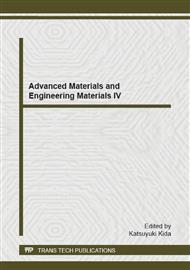[1]
G.Y. Bulatov, F.S. Shilkin. Selection and performance calculations pile-driving equipment. Internet Journal Construction of Unique Buildings and Structures, 2013, №3 (8). (rus).
Google Scholar
[2]
G.Y. Bulatov, N.B. Kolosova, A.B. Teplov, Bearing capability of driven piles with different types of cross-section, Construction of Unique Buildings and Structures, №1(6), 2013. (rus).
Google Scholar
[3]
Grutman M.S. Pile foundations. Kiev: Budivelnik, 1969. 191 p. (rus).
Google Scholar
[4]
Morozova T.F., Kinayat L. A., Kinayat A. Zh. Assessment of risks in construction. Internet Journal Construction of Unique Buildings and Structures, №5 (10), 2013. (rus).
Google Scholar
[5]
Van Impe W.F. Developments in pile design. DFI. Conference. Stressa, 1991. Pp. 2217-2234.
Google Scholar
[6]
Rajapakse R. Pile Design and Construction Rules of Thumb. 2008. Pp 337–342.
DOI: 10.1016/b978-0-7506-8763-8.00020-9
Google Scholar
[7]
Focht J.A. Jr., O'Neill M.W. Piles and other deep foundations/Proceedings of the XI International Conference on Soil Mechanics and Foundation Engineering. San Francisco: 1985. - vol. 1, P. 187-207.
Google Scholar
[8]
Punmia B. C., Ashok Kumar Jain, Arun Kr. Jain. Soil mechanics and foundations. Firewall Media, 2005, 940 p.
Google Scholar
[9]
Smith I.M. Installtion and performance of piled foundations / Third Int. Conf. on Num. Meth. in Geomech. (Aachen) 2-6 April, 1979, P. 1107-1114.
Google Scholar
[10]
Harr M. E. Foundations of theoretical soil mechanics. NY McGrow Hill, (1966).
Google Scholar
[11]
Venkatramaiah C. Geotechnical engineering. New Age International, 2007. 926 p.
Google Scholar
[12]
Melnikov V. A., Zarubin P. E. The comparative analysis of methodologies for calculating settlement of pile foundations. Construction of unique buildings and structures, №8 (13), 2013, pp.43-45. (rus).
Google Scholar
[13]
Braja M. Das. Advanced soil mechanics. New York: Taylor & Francis Group, 2008, 567 p.
Google Scholar
[14]
Bugrov A. K. Soil mechanics. SPb.: Publishing of SPbSPU, 2007. (rus).
Google Scholar
[15]
Uhov S. B., Semenov V. V., Znamenskiy V. V. Soil mechanics, bases and foundations. 4th edition. 2007, 566 p. (rus).
Google Scholar
[16]
Construction code design reinforced composite piles. Moscow. 1987. (rus).
Google Scholar


